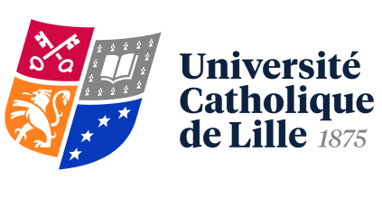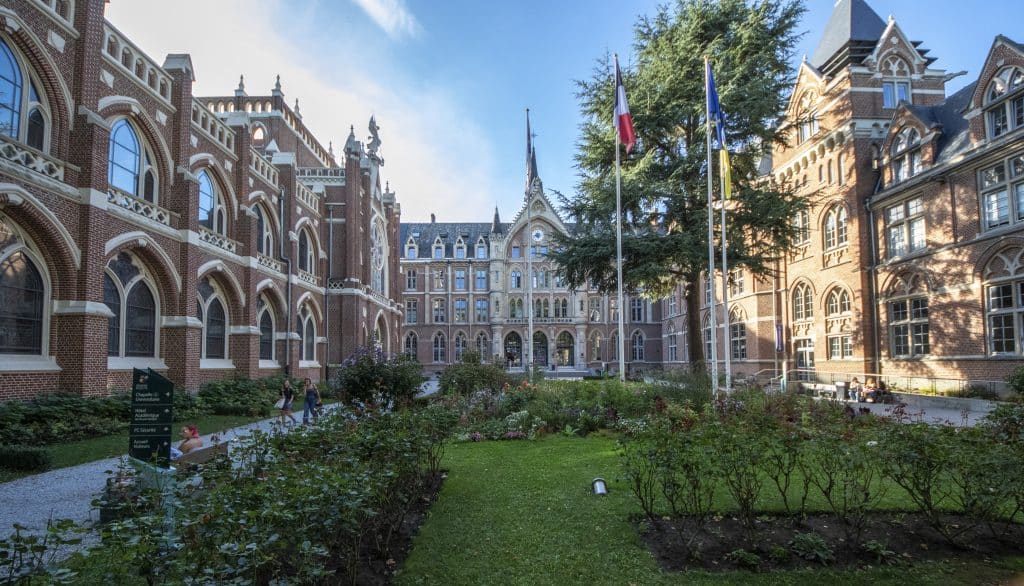
Created in 1875, the Université Catholique de Lille is the largest private university in France. It is a member of the Union des Établissements d’Enseignement Supérieur Catholique (UDESCA – Union of Catholic Higher Education Institutions,) of the European Federation of Catholic Universities (EFCU) and the International Federation of Catholic Universities (IFUC).
It is active in higher education, research and social service, especially through its hospital and medical-social activities. It is based on the human and Christian values that have animated it from the beginning. It is closely linked to its partners and is an actor of transition in the contemporary world thanks to its research projects, entrepreneurship, the inclusion of the most vulnerable populations and energy and societal transition.
With creativity and innovation as constant guidelines, the Université Catholique de Lille participates with its partners and the territory in the transitions in the contemporary world through its research projects, entrepreneurship, the inclusion of the most vulnerable populations and ecological and societal transition.
With a network of more than 500 partner universities around the world, the Université Catholique de Lille values and strengthens its links abroad, thus promoting international openness and collaboration. It is therefore actively committed to enriching the academic experience of its students and researchers.
The Université Catholique de Lille federates public-utility non-profit associations, with EESPIG (Établissement d’Enseignement Supérieur Privé d’Intérêt Général – General Interest Private Higher Education Institution) and ESPIC (Établissement de santé privé d’intérêt collectif – General Interest Private Health Institutions) labels, with no shareholders. One hundred percent of profits are reinvested into its mission (research, pedagogy, caring for its beneficiaries).
In figures
For more information
The Crest
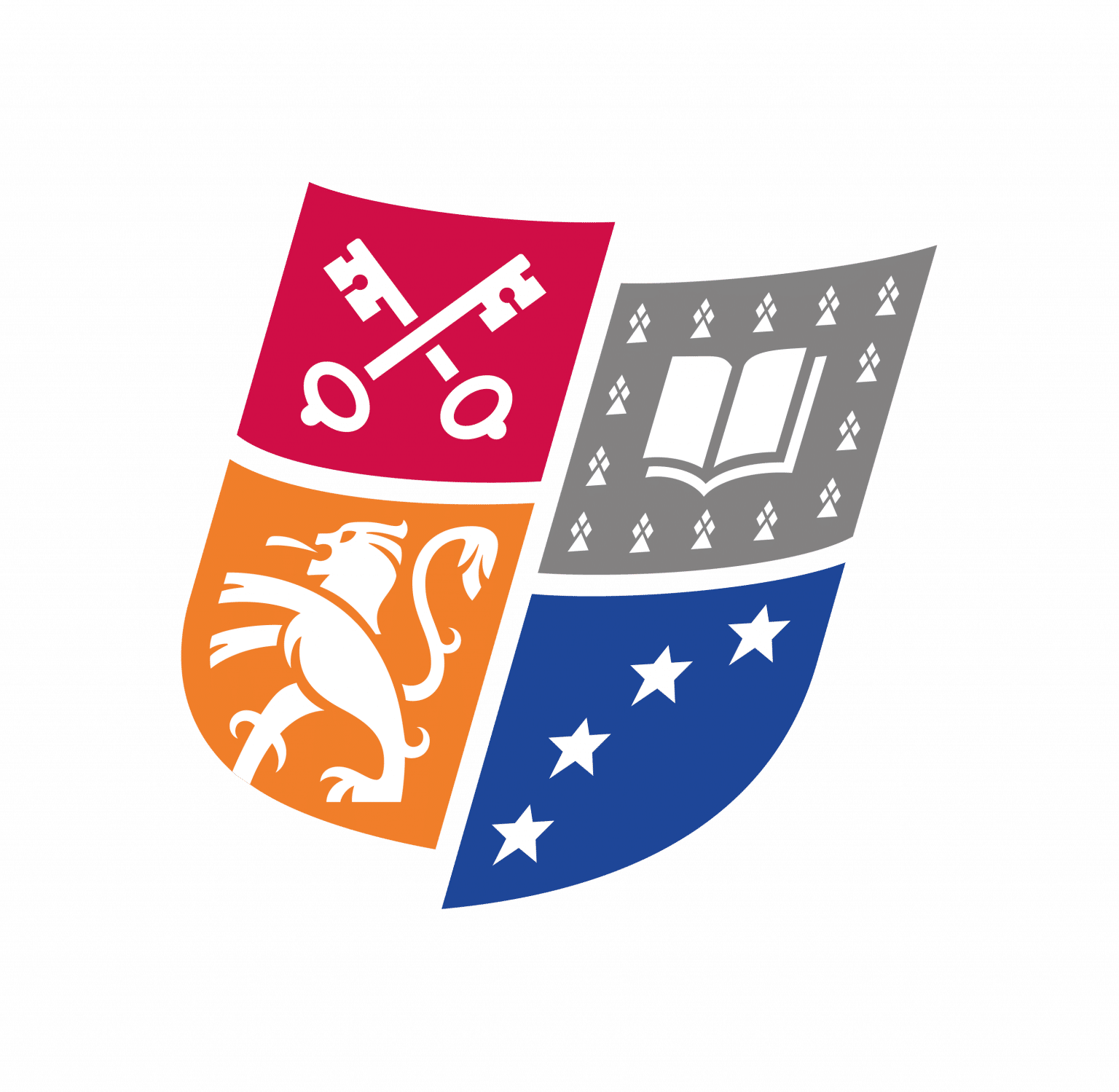
The University Crest, designed when the University was founded, embodies the institution’s academic and ecclesiastical values as well as its historical roots and the support of the northern provinces at the time of its creation.
The Crest is made of four separate quarters.
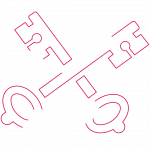
Saint Peter Keys
The first quarter presents a red field with two keys in saltire, symbols of the former Collégiale Saint-Pierre and the Notre-Dame de la Treille Cathedral. These keys are a reminder of the origins of the University and emphasize its connection to Saint-Peter.
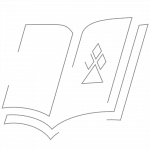
The Silver Book
The second quarter, decorated with ermines, houses an open silver book representing the science of doctors and the insignia that distinguishes them.
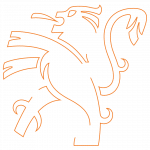
The Lion of Flanders
The third quarter, with a lion on a golden background, symbolizes Flanders, the historical region associated with the creation of the University.
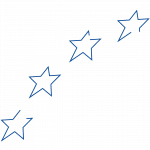
The Stars of Europe
Originally, the fourth quarter showed a blue background with golden fleurs-de-lis, topped with a red lambel with three pendants, each decorated with three golden castles, representing Artois and Flanders and the foundation of the University. In 2011, this quarter was modified to include the European Union’s star flag, thus reflecting the University’s commitment to the contemporary European context.
"In fide ad scientiam"

The motto in fide ad scientiam (in faith to knowledge), which once headed the University Crest, summarizes the founders’ ambition. It highlights the academic and ecclesial character of this institution, the tradition which forms its roots.
